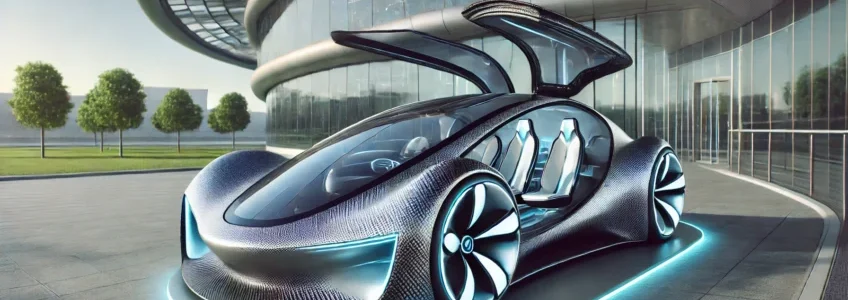The energy sector is in a constant state of evolution, with researchers and innovators around the world seeking new ways to power our planet sustainably. One particularly thought-provoking concept making waves in recent headlines is the idea of generating electricity from the Earth’s rotation — not through wind or tidal forces, but from its movement through the planet’s own magnetic field. Could this be a breakthrough in clean energy? Or is it just an intriguing theory that lacks real-world viability?
How Bio-Computing is Merging Human Intelligence with Technology
The world of computing is on the brink of a revolution. Scientists have successfully integrated human neurons with silicon technology, creating the first living computer—a system that merges biological intelligence with artificial computation. This breakthrough marks the dawn of bio-computing, a field that could reshape industries ranging from medicine and defence to artificial intelligence (AI) and automation.
In this article, we explore the potential of bio-computing, how it works, its real-world applications, and the role of precision engineering in supporting this exciting new frontier.
Is The Free-Energy Vehicle A Groundbreaking Innovation or an Impossible Dream?
The world of automotive engineering may be on the verge of its biggest disruption yet. A free-energy vehicle—a car that requires no fuel, no charging stations, and theoretically runs indefinitely—has been unveiled by Zimbabwean inventor Maxwell Chikumbutso. If true, this innovation could transform vehicle technology, disrupt the oil and gas sector, and challenge everything we know about car manufacturers and the EV industry. But is it really possible? Let’s break down the claims, the science, and the potential global impact of this controversial invention.
The Enron Egg: A Revolution in Compact Nuclear Reactor Technology
Starting the new year with discussions on cutting-edge energy innovations is a great way to stay ahead of the curve. One of the most exciting developments in the energy sector is the creation of the Enron Egg, a compact nuclear reactor that promises to revolutionise sustainable energy solutions. Designed to provide reliable, efficient, and cost-effective power, the Enron Egg utilises nuclear fission technology in a way that sets it apart from traditional energy systems. This article explores how this innovation works, its safety features, and its potential to reshape the future of energy production.
Diamond battery technology is redefining the future of energy storage, promising an unparalleled lifespan of 5,700 years. Following last week’s discussion on the transformative potential of advanced lithium-ion batteries, this innovation marks another significant leap in sustainable battery solutions.
Advanced lithium-ion batteries are at the forefront of revolutionising the electric vehicle (EV) industry, setting new benchmarks for range, durability, and sustainability. A recent breakthrough in battery technology has introduced a single crystal electrode design capable of withstanding over 20,000 charge-discharge cycles. This innovation translates to an astonishing five million miles of range in an EV, potentially outlasting the vehicle itself.
The world’s largest CO2 heat pump has officially begun operations in Denmark, marking a significant milestone in renewable energy heating systems. This cutting-edge seawater heat pump facility, located at the Port of Esbjerg, is capable of generating an impressive 70 MW of energy, enough to heat 25,000 homes annually. The project not only represents a leap forward in sustainable heating solutions, but also serves as a model for cities worldwide to achieve decarbonisation in their heating infrastructure.
In the quest to create energy-efficient vehicles and greener transportation solutions, carbon fibre batteries are emerging as a revolutionary technology. This new battery technology not only stores energy but also forms part of the structural framework of vehicles, drastically reducing weight and improving overall efficiency. The potential for carbon fibre batteries to reshape industries such as automotive and aerospace is immense.
The global demand for lithium, a critical component in electric vehicle (EV) batteries, continues to soar. In response, researchers have developed an innovative method for lithium extraction that promises to enhance both the efficiency and sustainability of battery recycling. This breakthrough could significantly impact various sectors, including automotive, aviation, and energy.
Unveiling the Future with CATL’s TENER Energy Storage System
The introduction of CATL’s TENER energy storage system represents a significant breakthrough in the world of energy storage. This innovative technology promises a lifespan of 20 years with zero degradation in the first five years, a feat that aligns perfectly with the global shift towards sustainable energy solutions. This article takes a closer look at the core aspects of the TENER energy storage system, exploring its potential to revolutionise the energy storage market.











Recent Comments